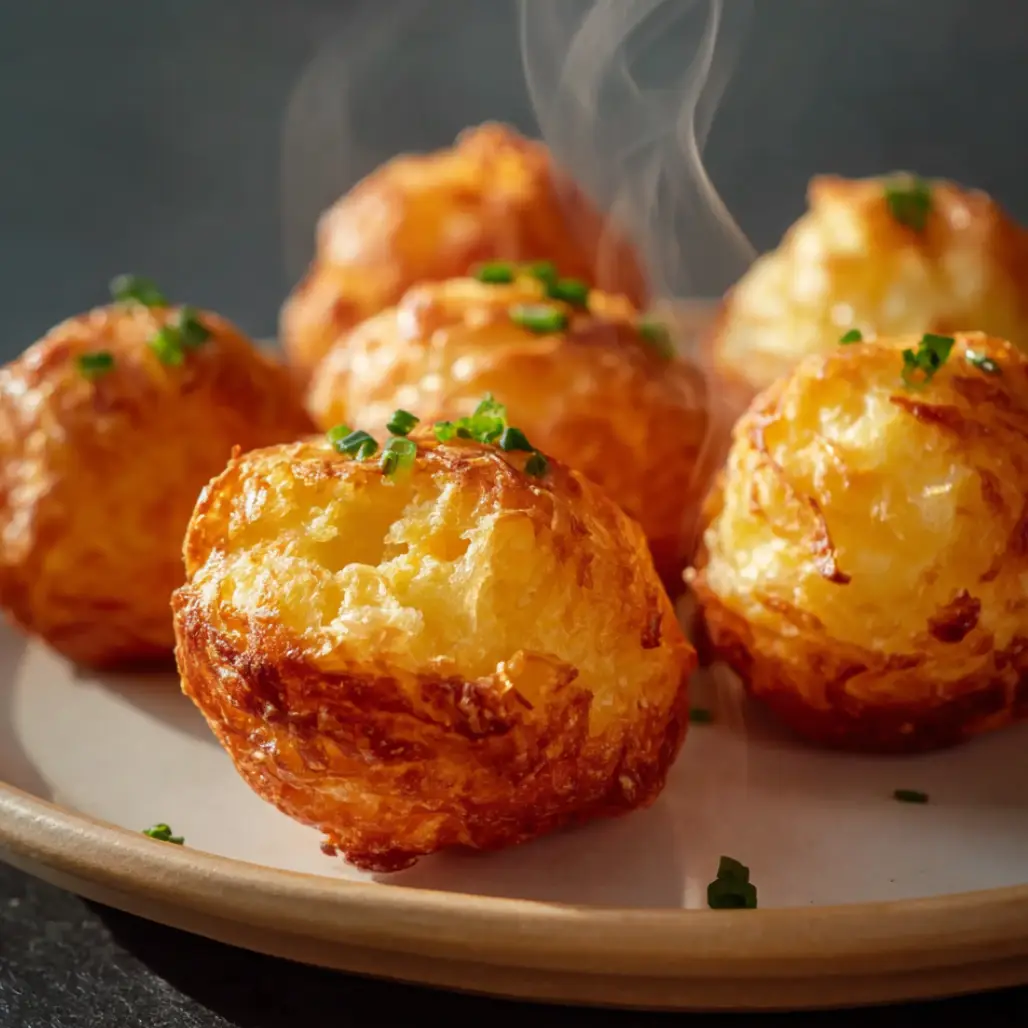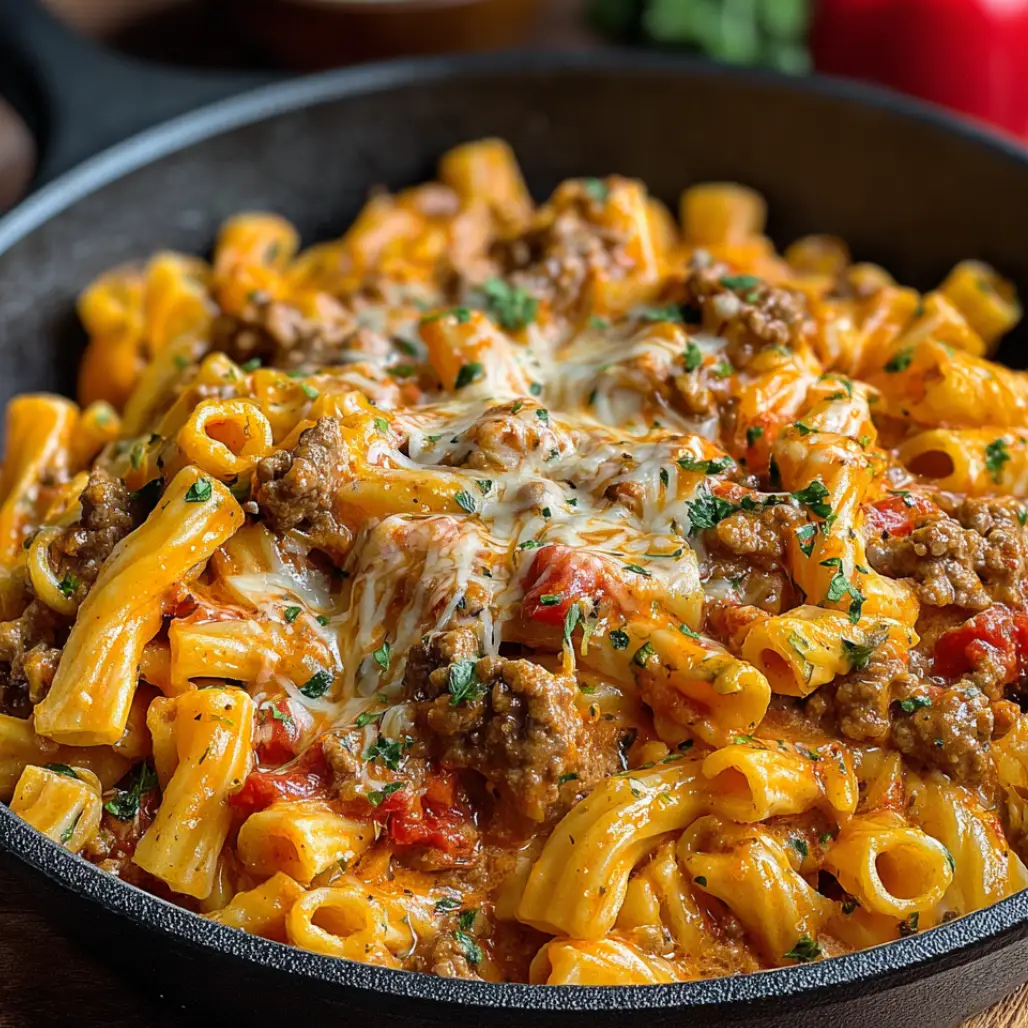| Prep Time: | 10 minutes |
|---|---|
| Cook Time: | 40 minutes |
| Total Time: | 50 minutes |
| Serves: | 4 |
The world of healthy snacking has been revolutionized by this incredible cottage cheese chips recipe that transforms humble dairy into crispy, golden delights because it proves that nutritious eating doesn’t require sacrificing the satisfying crunch we all crave from traditional snack foods. These remarkable chips emerge from your oven with a texture so perfectly crispy and a flavor so intensely savory that you’ll question why you ever reached for store-bought alternatives because each bite delivers substantial protein alongside that addictive crunch that keeps you coming back for more. The beauty of this cottage cheese chips recipe lies in its stunning simplicity, requiring just one primary ingredient yet producing results that rival any gourmet snack because the magic happens through careful technique and patience rather than complicated ingredient lists or expensive equipment.
Why This Cottage Cheese Chips Recipe Works
This cottage cheese chips recipe succeeds where many other healthy snack attempts fail because it harnesses the natural protein structure of cottage cheese to create genuine crispiness rather than the disappointingly chewy texture that often plagues alternative snacks. The high protein content in quality cottage cheese acts as the foundation for crispiness because proteins coagulate and firm up during the baking process, creating that satisfying snap between your teeth that defines truly excellent chips.
The extended baking time that this cottage cheese chips recipe requires isn’t a drawback but rather the secret to success because it allows moisture to evaporate completely while the proteins transform into a crispy matrix that holds its shape and texture. Unlike traditional chips that rely on oil for crispiness, these cottage cheese chips achieve their crunch through careful dehydration and protein coagulation because this process creates a naturally stable structure that doesn’t require artificial preservatives or excessive processing to maintain its appealing texture.
Temperature control throughout the baking process ensures even browning and consistent texture because gradual heat application prevents the proteins from seizing up too quickly while allowing proper moisture evaporation. For those seeking additional healthy options, our collection of snacks appetizers offers numerous complementary recipes that pair beautifully with these protein-rich chips while maintaining the same commitment to nutritious ingredients and satisfying flavors.
Essential Ingredients
For Basic Cottage Cheese Chips:
- 1 cup whole milk cottage cheese, preferably high-protein variety
- 1/2 teaspoon sea salt (optional, for basic seasoning)
For Everything Bagel Version:
- 1 cup whole milk cottage cheese
- 2 tablespoons Everything Bagel seasoning
For Ranch Flavor Variation:
- 1 cup whole milk cottage cheese
- 1 packet ranch dressing mix (about 1 tablespoon)
For Spicy Option:
- 1 cup whole milk cottage cheese
- 1 teaspoon smoked paprika
- 1/2 teaspoon garlic powder
- 1/4 teaspoon cayenne pepper
For Cheese Lover’s Version:
- 1 cup whole milk cottage cheese
- 1/4 cup grated Parmesan cheese
- 1/2 teaspoon onion powder
The Art of Creating Perfect Cottage Cheese Chips
Mastering this cottage cheese chips recipe requires understanding that success depends more on technique than on complicated ingredients because the transformation from soft dairy product to crispy snack relies on controlling moisture, temperature, and timing with precision and patience. The type of cottage cheese you choose dramatically affects your final results because higher protein content directly correlates with better crisping ability, while excess liquid content works against the dehydration process that creates the desired texture.
Proper moisture management begins before you even turn on your oven because draining excess liquid from your cottage cheese sets the foundation for crispy success. This cottage cheese chips recipe works best when you start with cottage cheese that feels relatively firm and cohesive rather than watery and separated because beginning with optimal moisture content reduces baking time and improves final texture dramatically.
The spreading and shaping technique affects both cooking time and final appearance because evenly flattened dollops cook more consistently than irregularly shaped mounds. Understanding these fundamental principles helps you adapt this cottage cheese chips recipe to different cottage cheese brands and varying moisture levels because the core techniques remain constant even when specific timing might need adjustment based on your particular ingredients and equipment.
Step-by-Step Instructions
Step 1: Prepare Your Workspace and Oven Preheat your oven to 350°F and line a large baking sheet with high-quality parchment paper because inferior parchment can cause sticking and uneven cooking that ruins the delicate texture you’re working to achieve. Position an oven rack in the center position to ensure even heat distribution because cottage cheese chips need consistent temperature from all sides to achieve uniform crispiness throughout the baking process.
Professional Tip: Use only heavy-duty parchment paper from reputable brands because cheap alternatives often lack proper non-stick coatings that can cause your cottage cheese chips to tear when removed from the baking sheet.
Key Points: Proper oven temperature and quality parchment paper form the foundation for successful cottage cheese chips because these elements prevent sticking while promoting even browning and consistent texture development.
Step 2: Strain Excess Moisture Place your cottage cheese in a fine-mesh strainer set over a bowl and let it drain for 15-20 minutes to remove excess whey because this liquid interferes with the crisping process and can cause your chips to become soggy or fail to achieve proper texture. Gently press the cottage cheese with a clean kitchen towel to extract additional moisture without crushing the curds because maintaining some structure helps create better chip formation during baking.
Professional Tip: If your cottage cheese seems particularly wet, extend the draining time to 30 minutes or wrap it in cheesecloth for more thorough moisture removal because starting with drier cottage cheese significantly improves your chances of achieving perfectly crispy results.
Key Points: Moisture removal is the most critical step in this cottage cheese chips recipe because excess liquid prevents proper protein coagulation and creates steam during baking that works against crispy texture development.
Step 3: Portion and Shape the Chips Using a tablespoon or small cookie scoop, place dollops of drained cottage cheese onto your prepared baking sheet, spacing them at least 2 inches apart because these cottage cheese chips will spread significantly during baking and need room to expand without touching each other. Gently flatten each dollop with the back of a spoon to create thin, even circles because uniform thickness promotes consistent cooking and prevents some areas from burning while others remain underdone.
Professional Tip: Aim for dollops that are roughly 1/8 inch thick after flattening because this thickness provides enough structure to hold together while allowing proper moisture evaporation during the extended baking time.
Key Points: Consistent sizing and adequate spacing prevent overcrowding that can cause uneven cooking, while proper flattening ensures uniform texture throughout each individual cottage cheese chip.
Step 4: Apply Seasonings Sprinkle your chosen seasonings evenly over each flattened cottage cheese dollop because seasoning distribution affects both flavor and final appearance of your finished chips. Avoid mixing seasonings directly into the cottage cheese because this can add unwanted moisture and interfere with the protein structure that creates crispiness during baking.
Professional Tip: Apply seasonings with a light hand initially because flavors concentrate during the long baking process, and you can always add more seasoning after baking if desired.
Key Points: Surface seasoning provides better flavor distribution and visual appeal than mixed-in seasonings because it doesn’t interfere with the cottage cheese’s ability to crisp properly while still delivering robust flavor in every bite.
Step 5: Begin the Baking Process Place your prepared baking sheet in the preheated oven and bake for 20 minutes without opening the door because frequent temperature fluctuations can interfere with the steady dehydration process that creates crispy cottage cheese chips. After the initial 20 minutes, check for spreading and early browning because oven variations can affect cooking speed and timing.
Professional Tip: Resist the temptation to peek during the first 20 minutes because opening the oven door releases heat and moisture that can significantly extend cooking time and affect final texture.
Key Points: Consistent heat during the initial baking phase allows proteins to begin setting while moisture starts evaporating, creating the foundation for the crispy texture that develops in later stages of cooking.
Step 6: Continue Baking for Optimal Crispiness Continue baking for an additional 15-25 minutes, checking every 5 minutes after the 30-minute mark because cottage cheese chips can go from perfectly golden to burnt quite quickly once they reach the critical browning stage. Look for edges that appear golden brown and centers that have transformed from white to light golden because these visual cues indicate proper moisture evaporation and protein coagulation.
Professional Tip: The cottage cheese chips are ready when they feel firm to gentle touch and have developed a golden color that extends from edges toward the center because this indicates complete moisture removal and proper protein setting.
Key Points: Extended baking time is essential for achieving true crispiness because cottage cheese requires complete dehydration to transform from its naturally soft texture into the satisfying crunch that defines successful chips.
Step 7: Perfect the Final Texture Remove the baking sheet from the oven when chips appear golden brown with darker edges because they will continue to crisp up during the cooling process as residual heat completes the final moisture evaporation. Allow the cottage cheese chips to cool completely on the baking sheet for at least 10-15 minutes because attempting to remove them too early can cause breaking and loss of that perfect crispy texture you’ve worked to achieve.
Professional Tip: The cottage cheese chips will continue to firm up significantly during cooling because the final moisture evaporation occurs during this critical period, so patience during cooling is just as important as proper baking technique.
Key Points: Complete cooling is essential for achieving maximum crispiness because the proteins continue to set and the final traces of moisture evaporate during this period, transforming good cottage cheese chips into exceptional ones.
Step 8: Remove and Final Quality Check Carefully lift each cottage cheese chip from the parchment paper using a thin spatula because even properly baked chips can be delicate until they reach room temperature completely. Test the texture by gently tapping a chip against the counter because properly made cottage cheese chips should produce a satisfying clicking sound that indicates genuine crispiness rather than chewiness.
Professional Tip: If any cottage cheese chips feel slightly soft or chewy after complete cooling, return them to a 300°F oven for 5-10 additional minutes because this extra time can often rescue chips that are close to perfect crispiness.
Key Points: Proper texture testing ensures that your cottage cheese chips meet the crispy standard that makes this recipe so appealing because the difference between crispy and chewy determines whether this healthy snack satisfies your craving for traditional chip textures.
Professional Tips for Success
Understanding the science behind this cottage cheese chips recipe empowers you to troubleshoot problems and achieve consistent results regardless of variations in cottage cheese brands or environmental factors because the fundamental principles remain constant even when specific details might require adjustment. High-protein cottage cheese brands consistently produce superior results because the protein content directly correlates with structure formation during baking, while lower-protein varieties may require longer baking times or additional moisture removal to achieve comparable crispiness.
Oven calibration significantly affects your cottage cheese chips recipe results because temperature variations of even 25 degrees can dramatically alter cooking times and final texture. Consider investing in an oven thermometer to verify accuracy because many home ovens run hotter or cooler than their settings indicate, and this knowledge allows you to adjust accordingly for perfect results every time.
Storage techniques preserve the crispy texture that makes these cottage cheese chips so appealing because exposure to humidity quickly reverses the dehydration process that creates their satisfying crunch. For expanded snacking options, explore our perfect sides collection which offers numerous complementary recipes that pair beautifully with these protein-rich chips while maintaining focus on wholesome, satisfying ingredients.
Creative Variations to Explore
Transform your basic cottage cheese chips recipe into exciting flavor adventures by experimenting with different seasoning combinations that complement the mild, tangy base flavor of cottage cheese because this neutral foundation accepts both subtle and bold flavoring approaches with equal success. Mediterranean-inspired versions using dried herbs like oregano, basil, and garlic powder create sophisticated flavor profiles because these aromatic seasonings pair naturally with dairy products while adding complexity without overwhelming the delicate cottage cheese base.
Spicy variations appeal to those who enjoy heat because cottage cheese’s cooling properties balance intense spices beautifully, creating a harmonious contrast that enhances both elements. Try combinations like chipotle and lime, curry powder and turmeric, or sriracha and sesame seeds because these bold pairings transform simple cottage cheese chips into gourmet snack experiences that rival expensive specialty products.
Sweet applications might seem unconventional but work surprisingly well because cottage cheese’s mild flavor accepts dessert-style seasonings like cinnamon and stevia, vanilla and almond extract, or even cocoa powder for chocolate-inspired versions. For additional creative inspiration, browse our dessert recipes collection which demonstrates how versatile ingredients can cross traditional boundaries between sweet and savory applications while maintaining nutritional benefits.
Perfect Pairing Ideas
These cottage cheese chips excel as vehicles for various dips and spreads because their sturdy texture holds up to both thick and thin accompaniments while their mild flavor complements rather than competes with bold dipping options. Classic combinations like guacamole, salsa, or hummus work beautifully because the protein-rich chips provide satisfying substance that transforms light dips into more filling snack experiences.
Gourmet pairing options elevate cottage cheese chips from simple snacks to sophisticated appetizers because their clean flavor profile accepts upscale accompaniments like herbed cream cheese, olive tapenade, or artichoke dip without losing their essential character. Consider serving them alongside wine and cheese presentations because their crispy texture provides appealing contrast to soft cheeses while their protein content helps balance alcohol consumption during social gatherings.
For beverage pairings, explore options from our refreshing beverages collection because the right drink can enhance the snacking experience while providing palate cleansing between different flavor combinations. Sparkling water with citrus, herbal teas, or light white wines complement the clean flavors of cottage cheese chips because these beverages refresh the palate without overwhelming the subtle dairy notes that make these chips so appealing.
Discover More Protein-Packed Options
Expand your healthy snacking repertoire by exploring complementary recipes that share the high-protein, low-carb philosophy of this cottage cheese chips recipe because building a diverse collection of nutritious options prevents boredom while maintaining commitment to healthier eating patterns. Cheese-based snacks like baked Parmesan crisps or roasted chickpeas provide similar satisfying crunch with different flavor profiles because variety keeps healthy eating interesting and sustainable over time.
Protein-rich dips and spreads from our flavored dips marinades collection pair perfectly with these cottage cheese chips because combining different protein sources creates more complete nutritional profiles while delivering complex flavors that satisfy sophisticated palates. Consider recipes like white bean hummus, Greek yogurt-based dips, or nut-based spreads because these options extend the protein benefits while providing complementary textures and flavors.
Morning applications for cottage cheese chips might seem unusual but work beautifully in breakfast contexts because their protein content provides sustained energy while their crispy texture adds interest to typical morning fare. Check our breakfast favorites section for inspiration on incorporating these chips into morning meals because protein-rich breakfasts support steady energy levels throughout busy days while satisfying early morning hunger more effectively than carbohydrate-heavy alternatives.
Storage and Make-Ahead Guidelines
Proper storage techniques preserve the crispy texture that makes cottage cheese chips so appealing because exposure to moisture quickly reverses the dehydration process that creates their satisfying crunch. Store completely cooled chips in an airtight container at room temperature for up to three days because refrigeration introduces humidity that can soften the carefully achieved crispy texture and diminish the satisfying eating experience.
Layer storage helps maintain quality when storing multiple batches because direct contact between chips can cause moisture transfer and texture degradation. Place parchment paper or paper towels between layers of cottage cheese chips because these absorbent materials capture any residual moisture while preventing chips from sticking together or breaking during storage and handling.
Make-ahead strategies allow you to enjoy fresh cottage cheese chips without daily preparation because understanding optimal storage timing helps you plan snack preparation around your schedule. Prepare large batches during weekend meal prep sessions because the extended baking time makes efficiency valuable, but avoid storing them for longer than three days because texture quality deteriorates significantly after this point regardless of storage method.
The Science Behind Perfect Results
Understanding the protein chemistry involved in this cottage cheese chips recipe helps explain why specific techniques produce superior results because cottage cheese contains casein proteins that coagulate and firm up when heated slowly and steadily. This protein network formation creates the structural foundation for crispiness because properly coagulated proteins hold their shape while moisture evaporates, leaving behind a stable matrix that provides satisfying texture.
Moisture evaporation occurs in distinct phases during the extended baking process because different types of water molecules bind to cottage cheese with varying degrees of strength. Free moisture evaporates first during initial heating, followed by bound moisture that requires higher temperatures and longer exposure to escape completely because thorough dehydration is essential for achieving genuine crispiness rather than disappointing chewiness.
Temperature control affects protein behavior because excessive heat causes proteins to seize up too quickly, creating tough, rubbery textures rather than the delicate crispiness that defines successful cottage cheese chips. Moderate, consistent heat allows proteins to coagulate gradually while moisture evaporates at a controlled rate because this balance between protein setting and moisture removal determines final texture quality more than any other factor in the recipe.
Troubleshooting Common Issues
Soggy or chewy cottage cheese chips typically result from insufficient moisture removal or inadequate baking time because these factors prevent proper protein coagulation and complete dehydration. If your chips consistently turn out soft, extend the initial draining period to 30-45 minutes and increase baking time in 5-minute increments because individual cottage cheese brands vary significantly in moisture content and protein concentration.
Burning or overly dark chips usually indicate oven temperature problems or insufficient spacing between dollops because crowded chips cook unevenly while hot spots in ovens can cause rapid browning in specific areas. Check your oven temperature with an independent thermometer and ensure adequate spacing between cottage cheese dollops because these adjustments often resolve browning issues without requiring recipe modifications.
Sticking problems generally stem from poor-quality parchment paper or insufficient cooling time because cottage cheese chips need to firm up completely before removal attempts. Invest in heavy-duty parchment paper from reputable brands and allow full cooling periods because patience during this final stage prevents frustrating breakage and texture loss that can ruin otherwise perfectly prepared chips.
Additional Inspirations with Links
Extend your cottage cheese adventures beyond chips by exploring recipes that utilize this versatile ingredient in different applications because mastering one cottage cheese technique opens doors to numerous other creative possibilities. Cottage cheese pancakes, protein smoothies, and baked breakfast casseroles all benefit from the same high-protein advantages while providing variety in texture and presentation because diverse applications prevent monotony while maintaining nutritional benefits.
Savory applications extend far beyond snack foods because cottage cheese’s mild flavor and protein content make it valuable in main dishes, side preparations, and appetizer presentations. Our salads collection features numerous recipes that incorporate cottage cheese as a protein boost because this ingredient transforms simple vegetable dishes into satisfying, complete meals that provide sustained energy and satiety.
International flavor inspirations adapt cottage cheese chips to global taste preferences because this technique translates beautifully across different culinary traditions. Mediterranean herb blends, Mexican spice combinations, Asian-inspired seasonings, and Indian curry powders all work beautifully with the basic cottage cheese chips recipe because the neutral base accepts diverse flavor profiles while maintaining its essential protein benefits and crispy texture appeal.
Conclusion
This cottage cheese chips recipe represents a perfect marriage of health consciousness and snacking satisfaction because it proves that nutritious choices don’t require sacrificing the textures and flavors we crave from traditional comfort foods. The transformation of simple cottage cheese into crispy, flavorful chips demonstrates how understanding basic cooking science empowers home cooks to create healthier versions of favorite foods because technique and patience often matter more than expensive ingredients or complicated equipment.
Mastering this cottage cheese chips recipe builds confidence for exploring other protein-rich snack alternatives because the fundamental principles of moisture control, temperature management, and proper timing apply to numerous other healthy cooking applications. The skills you develop while perfecting these chips translate directly to other baking and dehydration techniques because understanding how proteins behave under heat opens doors to countless creative possibilities in healthy recipe development.
Whether you’re seeking high-protein snacks for fitness goals, low-carb options for dietary preferences, or simply wanting to expand your repertoire of satisfying healthy foods, this cottage cheese chips recipe delivers on all fronts because it combines nutritional benefits with genuine eating pleasure in ways that make healthy choices feel like indulgent treats rather than dietary sacrifices.










